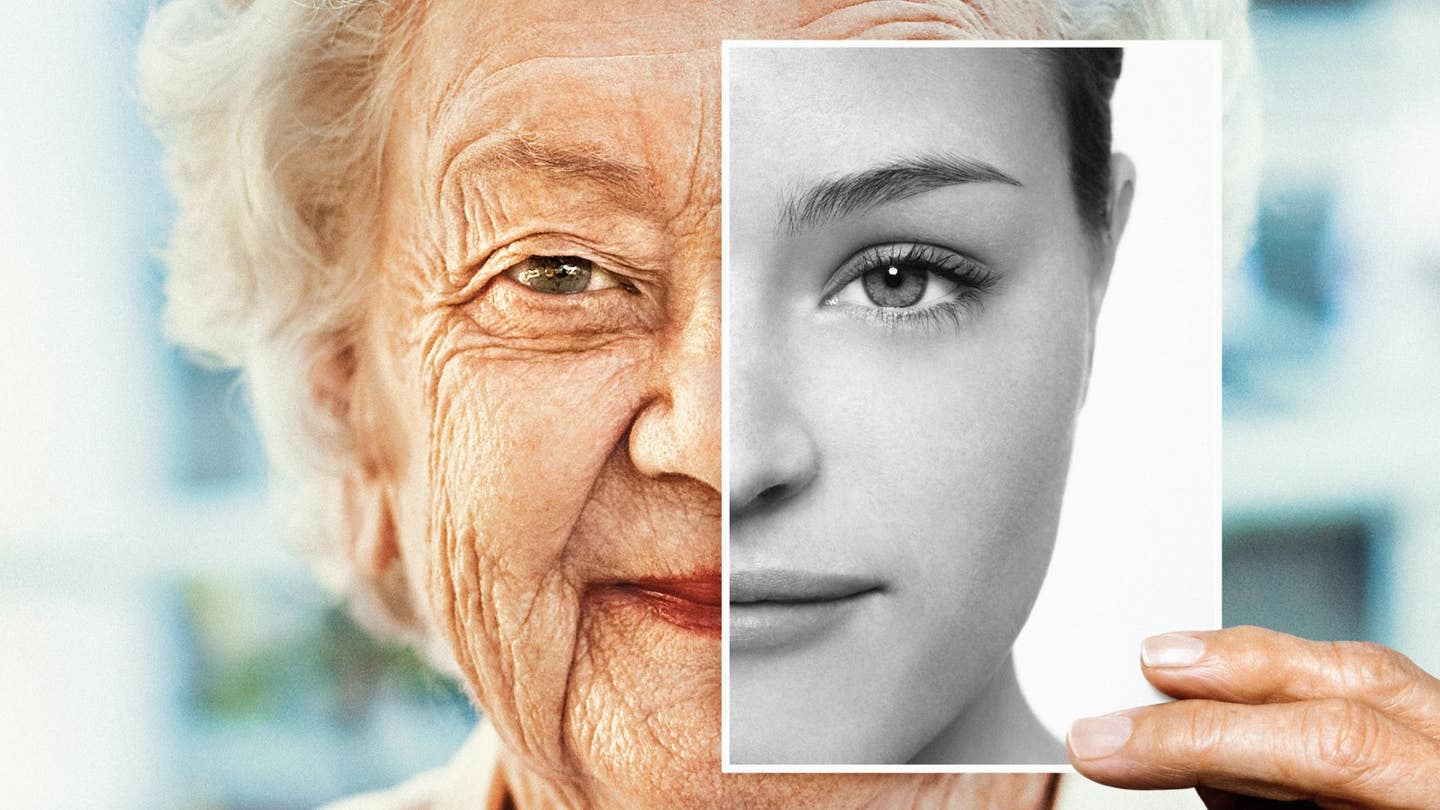New protein discovery opens the door to slowing or even reversing cellular aging
A new study reveals how aging spreads through the bloodstream via a protein called ReHMGB1—and how blocking it may reverse tissue damage.

Scientists find aging spreads through blood via ReHMGB1, opening doors to therapies that could slow or reverse tissue damage. (CREDIT: Dimitri Otis / Getty Images)
For decades, scientists have understood that aging begins at the cellular level. But one major question has remained unanswered: how does the aging of individual cells lead to the aging of entire organs or even the whole body? A new study now offers the clearest answer yet—and it could open the door to slowing or even reversing age-related decline.
A research team led by Professor Ok Hee Jeon at Korea University's College of Medicine has made a breakthrough discovery. They found that a specific protein called High Mobility Group Box 1 (HMGB1) can carry aging signals from cell to cell and organ to organ through the bloodstream.
This key finding, published in the journal Metabolism – Clinical and Experimental, uncovers a previously hidden mechanism behind the spread of cellular aging and reveals a promising target for future anti-aging treatments.
A Molecular Messenger of Aging
Cells that become senescent—meaning they stop dividing and begin to malfunction—release a mix of harmful molecules known as the senescence-associated secretory phenotype (SASP). These molecules can damage nearby cells and tissues. Over time, this buildup of senescent cells leads to chronic inflammation, slower tissue repair, and various age-related diseases.
What has puzzled scientists until now is how this aging process moves beyond local areas to affect the whole body. Professor Jeon's team focused on HMGB1, a protein that plays several roles in the body and is known to be part of the SASP. What they found was striking: not all forms of HMGB1 are the same, and only one specific form—called reduced HMGB1 (ReHMGB1)—triggers widespread senescence in distant cells and tissues.
Using cell cultures and mouse models, the team showed that ReHMGB1, when released into the blood, can travel to other parts of the body. There, it causes healthy cells to enter a senescent state. This didn't happen with the oxidized version of the same protein, known as OxHMGB1. The difference in redox state—the chemical balance between reduction and oxidation—made all the difference in the protein’s effects.
Related Stories
- Natural sweetener Stevia found safe and effective at killing pancreatic cancer cells
- Scientists recreate cellular metabolism within synthetic cells
- New universal cancer vaccine fights tumors by kickstarting immune defenses
Bloodborne Aging Signals
To test the effects of ReHMGB1, the researchers introduced it into the bloodstream of mice. The results were immediate and measurable. The mice displayed elevated levels of two well-known markers of aging: p21 and p16. These markers indicate that cells have stopped dividing and are entering a senescent state. The mice also showed higher levels of SASP factors and suffered from weaker muscle function.
More surprisingly, ReHMGB1 had an impact far from the point of origin. When injected into mice, it caused senescence in tissues throughout the body, not just where the protein was first introduced. In other words, aging signals could now be confirmed to spread systemically, like a ripple effect through the bloodstream.
Cells from various tissue types—including skin fibroblasts, kidney epithelial cells, and skeletal muscle—were all affected. This shows that ReHMGB1 has a broad and damaging effect on the body's ability to stay healthy and regenerate itself.
Blocking the Signal Reverses the Damage
Once the team confirmed ReHMGB1’s role in driving systemic aging, they asked the next logical question: Could this process be stopped or reversed?
In another experiment, they used a muscle injury model in middle-aged mice. Some mice were given antibodies that neutralized HMGB1, while others were not. The differences were dramatic. Mice treated with anti-HMGB1 antibodies had lower levels of senescence markers and showed better muscle repair. Their physical strength also improved. This suggests that interfering with ReHMGB1 may help protect or restore tissue function. If future therapies can safely target ReHMGB1, they could potentially reduce the effects of aging in multiple organs at once.
"This study reveals that aging signals are not confined to individual cells but can be systemically transmitted via the blood, with ReHMGB1 acting as a key driver,” said Professor Jeon. “By blocking this pathway, we were able to restore tissue regenerative capacity, suggesting a promising strategy to treat aging-related diseases.”
Why This Matters
Aging is not just about wrinkles and slower reflexes. It affects every organ in the body, from the heart to the muscles to the brain. As more people live longer lives, scientists and doctors are under growing pressure to find ways to keep those extra years healthy and active. This new discovery helps explain one of aging’s most mysterious features—how it spreads. By identifying ReHMGB1 as a core signal behind this process, the research opens up a new field of study focused on stopping cellular aging at its root.
The study also helps to answer a bigger question: can aging be treated like a disease? If systemic senescence is driven by a single circulating protein, then targeting that protein could delay or reduce the health problems tied to aging.
Of course, many steps lie between this lab research and real-world treatments. More studies are needed to see if the same mechanisms are at work in humans and to confirm the safety of any future therapies. But the discovery is a major step forward.
Looking to the Future
The research by Professor Jeon and her team marks a turning point in how we understand aging. It shows that aging is not just a result of wear and tear, but a process driven by signals that can spread across the body. ReHMGB1 may act like a molecular switch that turns on aging in distant cells.
With this knowledge, scientists now have a clear target to explore. Blocking ReHMGB1 or controlling its release could help delay muscle loss, support organ function, and possibly extend the healthy years of life.
The journey from lab discovery to medicine is long. But by tracing the path of a single protein through the bloodstream, researchers have come closer to solving one of biology’s biggest puzzles—and closer to finding a way to fight aging from the inside out.
Note: The article above provided above by The Brighter Side of News.
Like these kind of feel good stories? Get The Brighter Side of News' newsletter.



